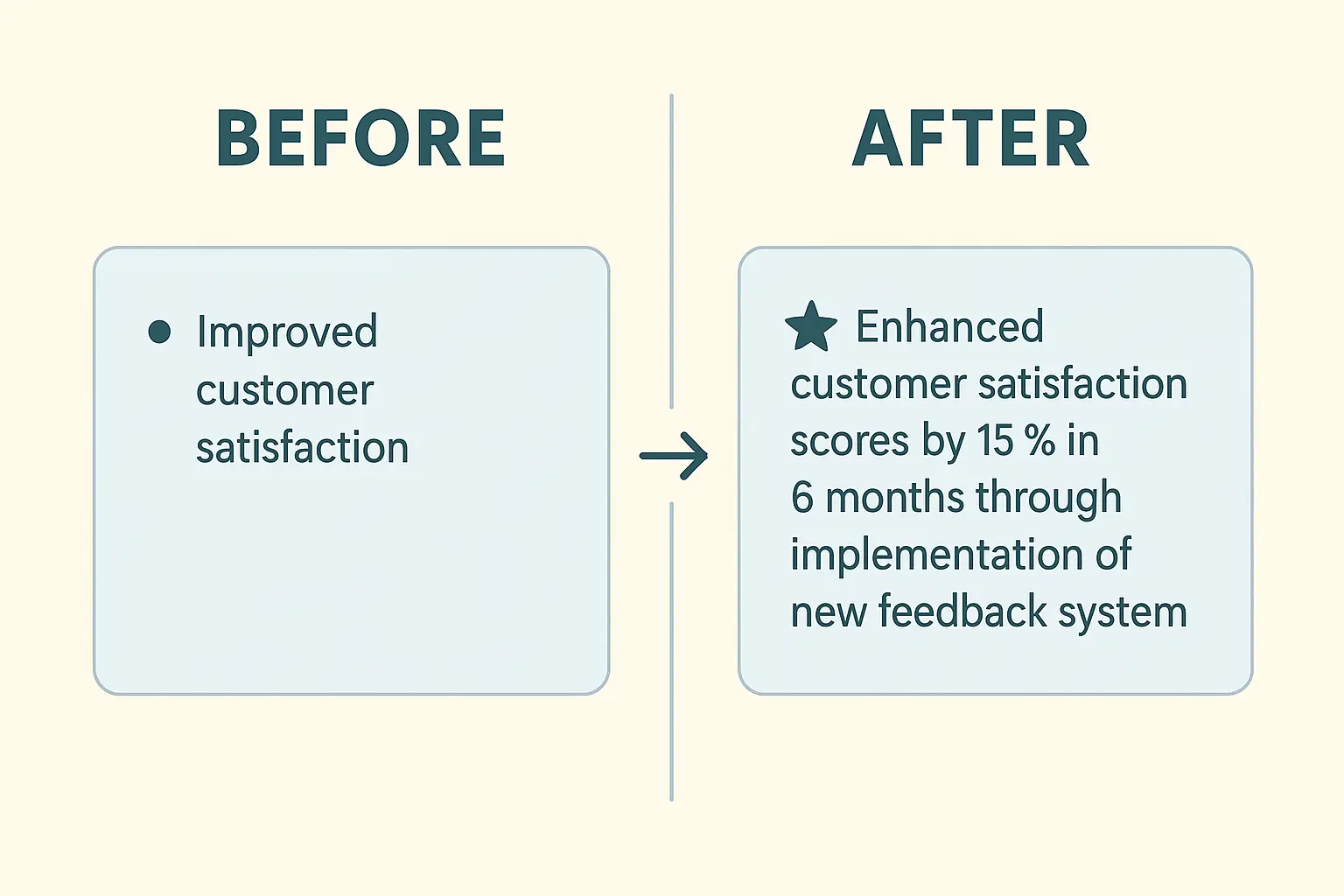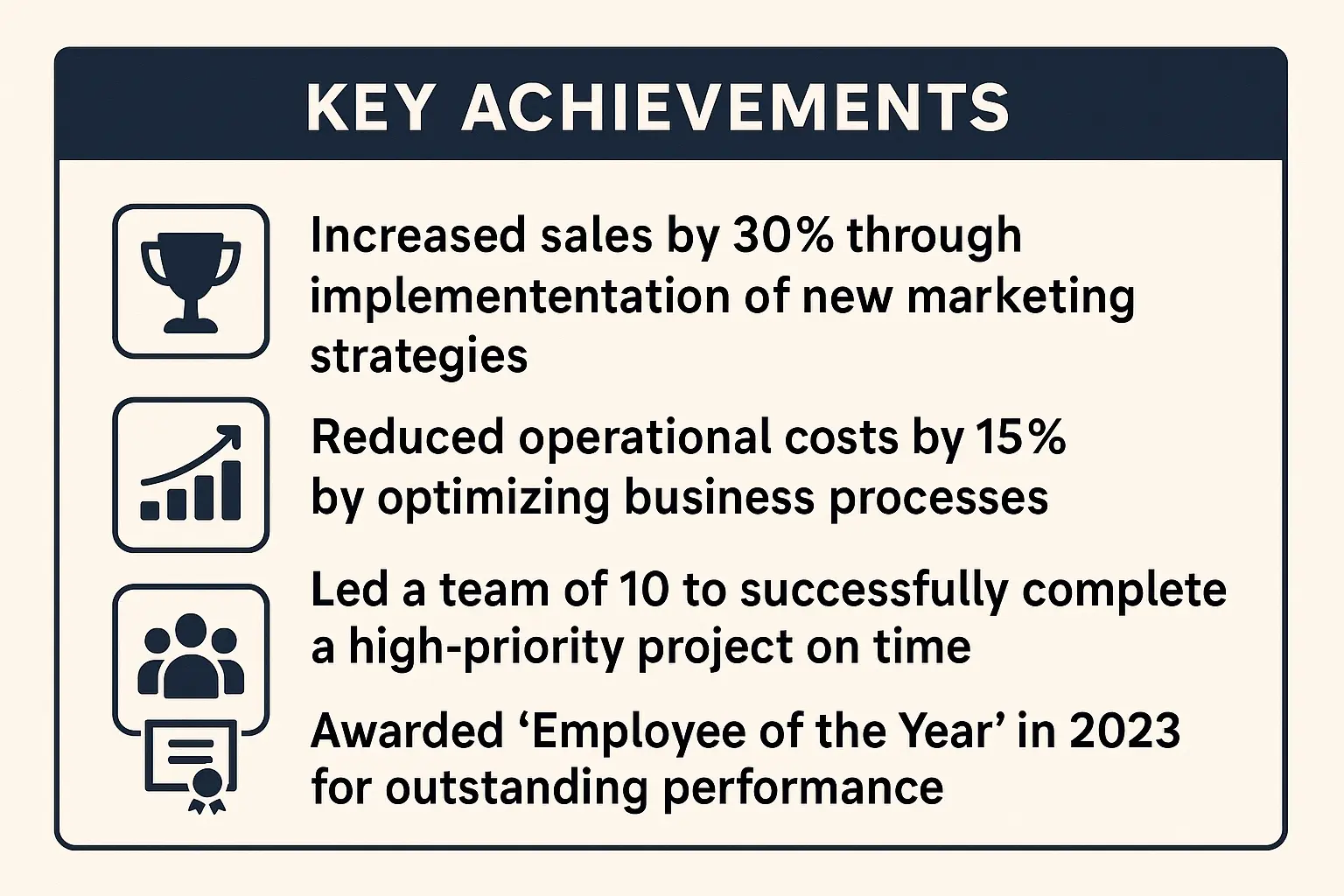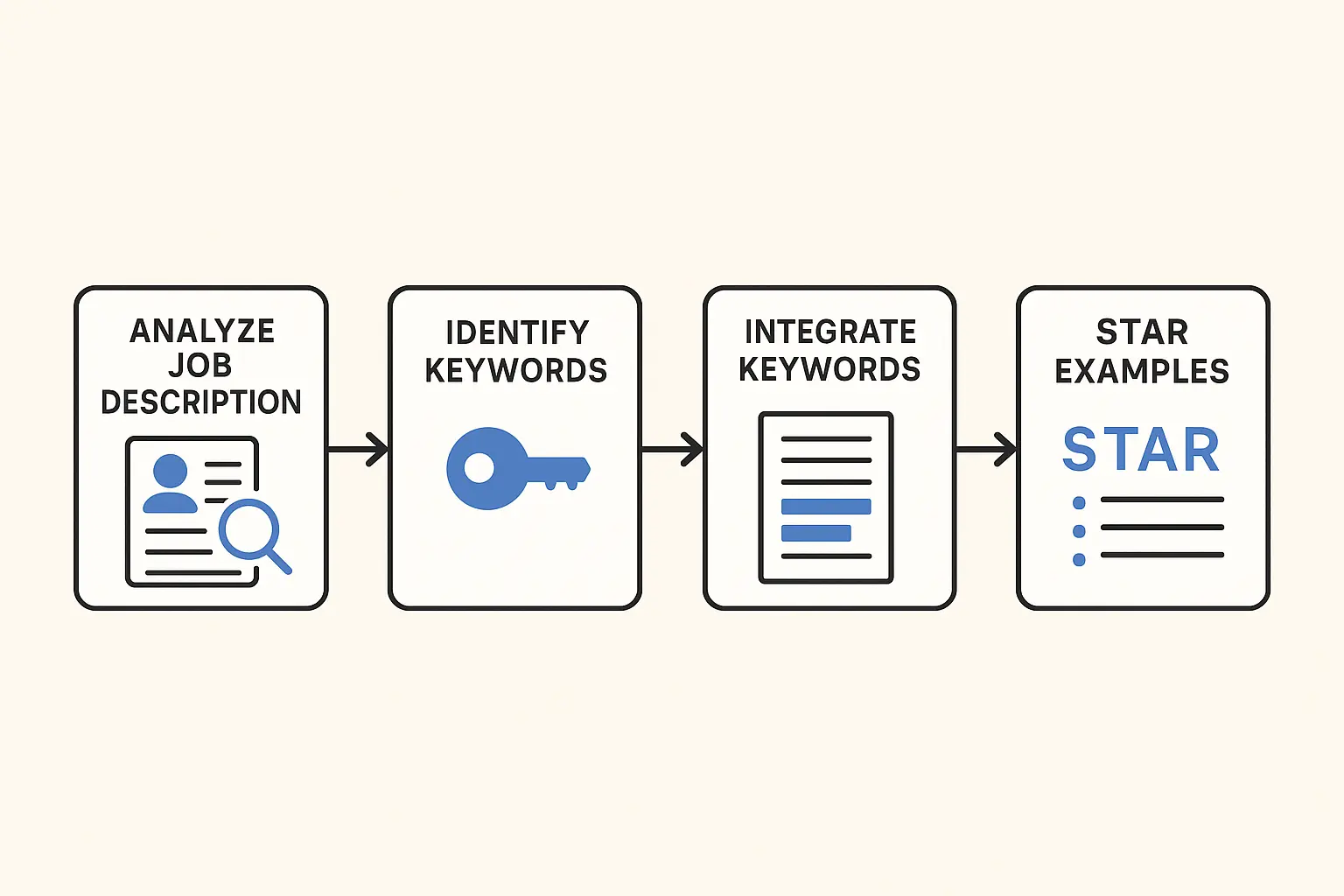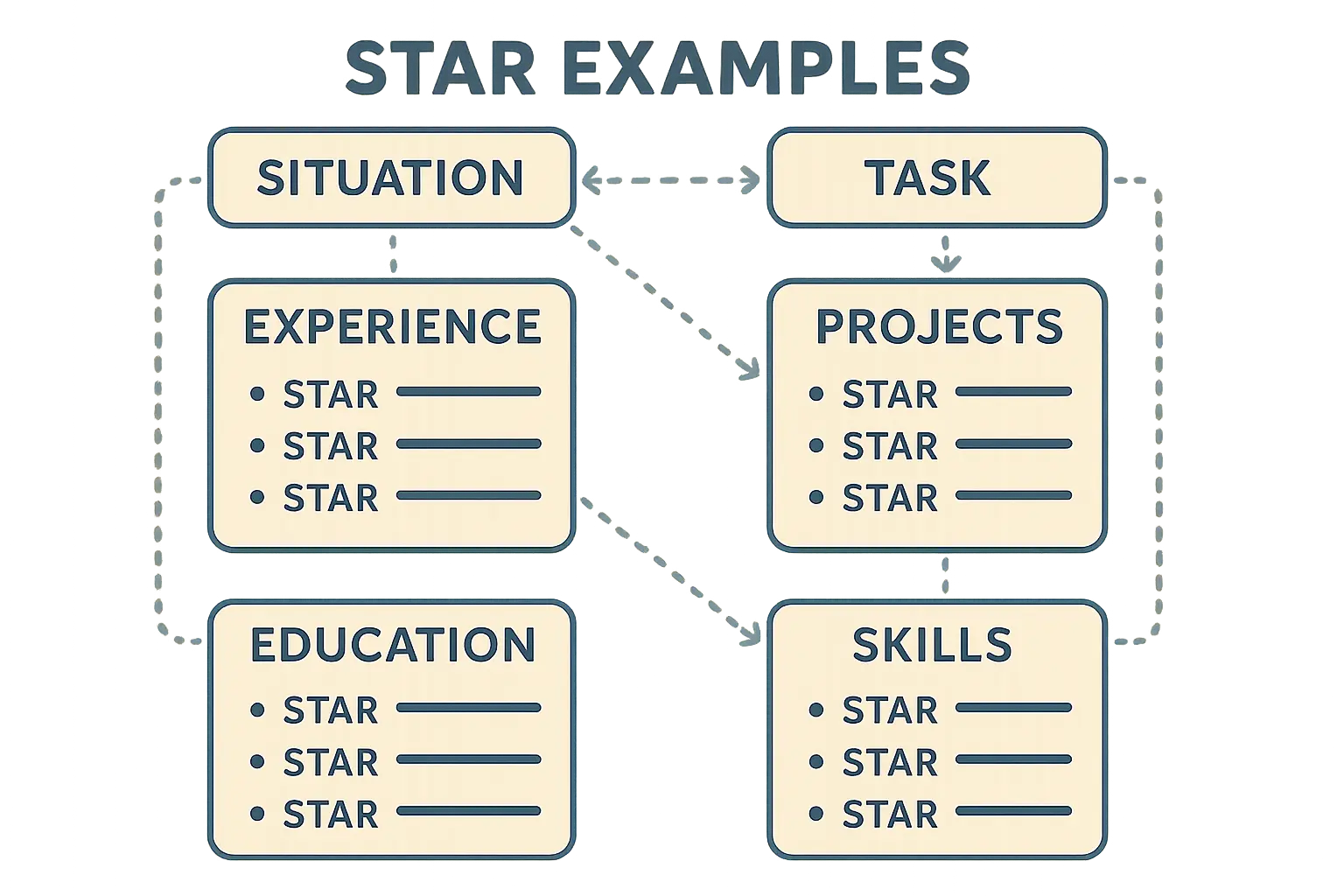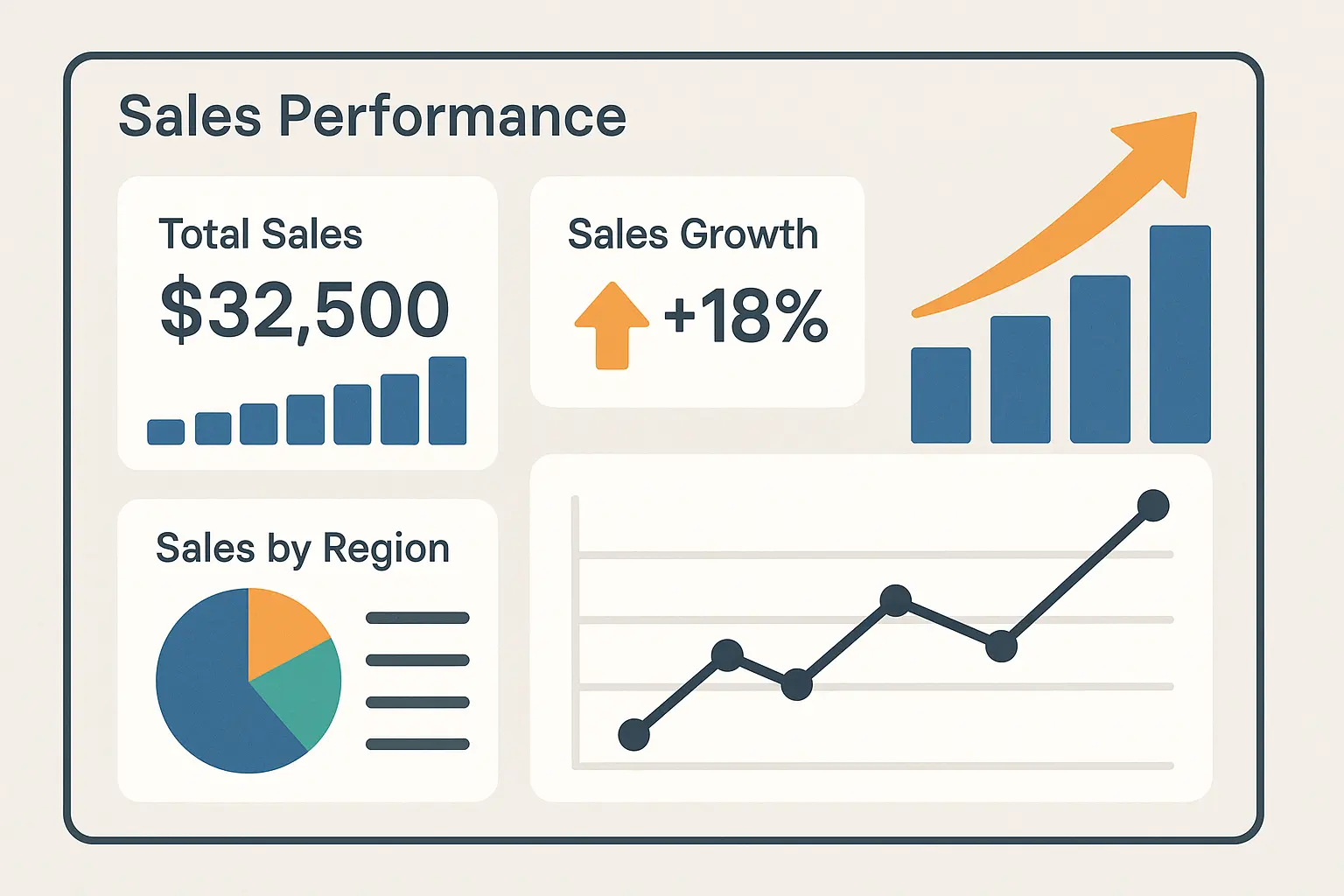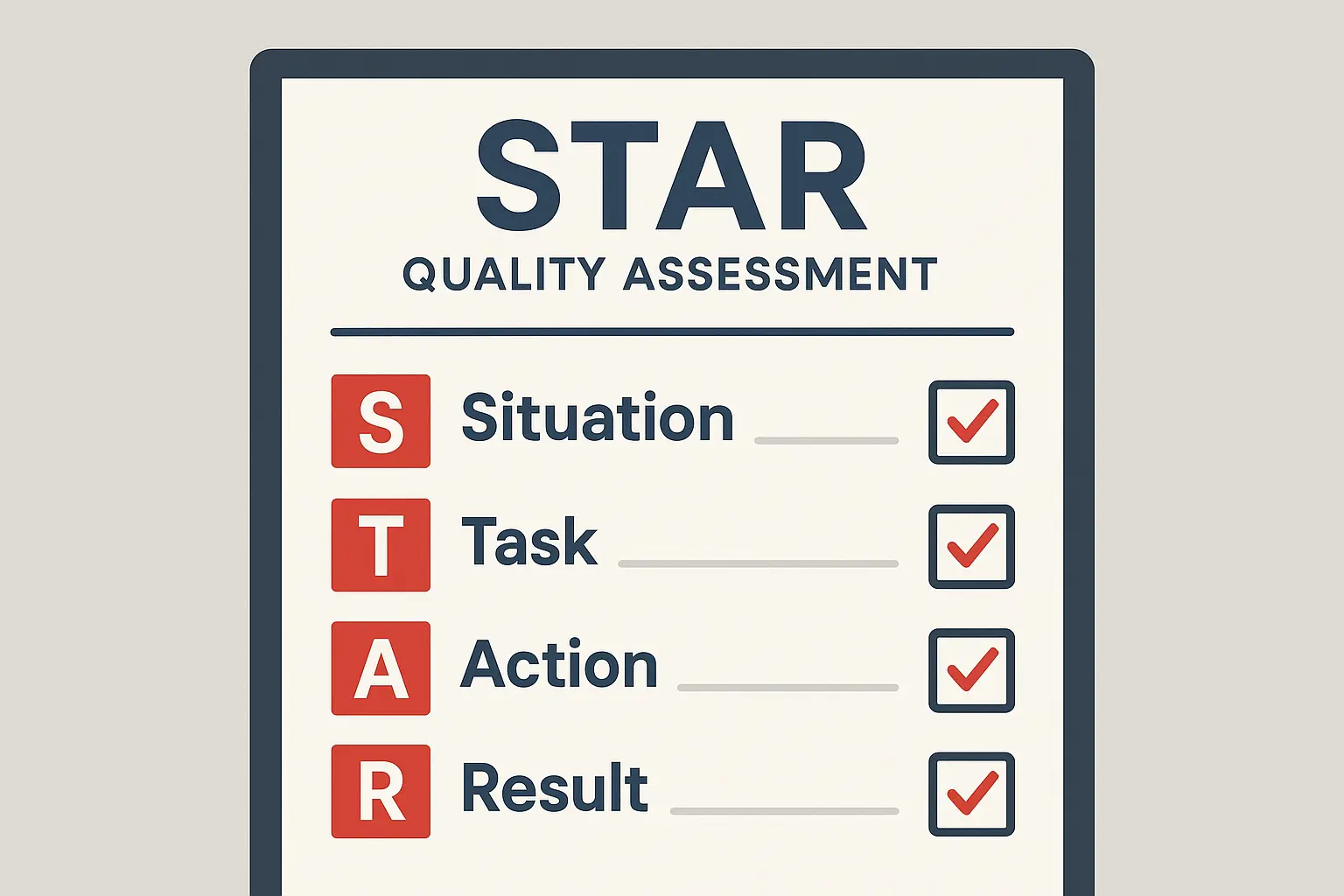STAR Method Resume: The Secret Formula That Gets You Past ATS and Into Interviews

Your resume is probably boring the hell out of hiring managers. Here’s how I know: if your bullet points start with “Responsible for…” or “Managed…”, you’re putting people to sleep.
Here’s the thing about resumes – most people are sabotaging themselves without realizing it. They’re listing job duties like a robot instead of telling stories that make hiring managers think, “I need to meet this person.” The STAR method changes everything by turning ordinary work experiences into compelling stories that actually grab attention.
The competition is brutal out there. Employers receive hundreds of applications for each position, which means your resume has about 6 seconds to make an impression. According to Jobscan’s research, resumes using structured achievement statements like those created with the STAR method can increase social media following by 25% in six months and website traffic by 15% when properly implemented with quantifiable metrics.
Think of your resume like a movie trailer. Nobody wants to watch two hours of someone filing paperwork – they want to see the explosions, the drama, the moments where the hero saves the day.
Here’s what we’ll cover:
-
What STAR actually means (quick)
-
Why it works better than boring bullet points
-
How to write STAR examples that don’t suck
-
Common mistakes to avoid
TL;DR
STAR method = Situation + Task + Action + Result. Turn boring job duties into stories with numbers. Even if you’re new to work, you can find examples from school, volunteering, or side projects. Stop making your resume a boring list and start telling stories that prove you get results.
What STAR Actually Means
Most people think they understand storytelling, but when it comes to resumes, they freeze up and revert to boring job descriptions. The STAR framework gives you a proven structure that works every single time. I’ve seen candidates go from zero callbacks to multiple interviews just by restructuring their content using these four components.
You’re essentially answering four questions: What was happening? What did you need to do? How did you do it? What happened as a result? When you answer these systematically, you create stories that stick in people’s minds.
Setting the Scene: Why Context Creates Credibility
Context is everything in professional storytelling. When you jump straight into what you accomplished without explaining the circumstances, you’re asking hiring managers to fill in the blanks themselves. They won’t do it.
The Situation component establishes the professional backdrop that makes your achievements meaningful. Were you working with a tight deadline? Managing a crisis? Dealing with budget constraints? These details help employers understand the complexity of your environment and the challenges you navigated.
Not every workplace situation deserves space on your resume. Focus on scenarios that directly relate to your target role’s requirements or demonstrate your ability to handle challenges similar to those you’ll face in the new position.
When selecting the most impactful scenarios for your STAR examples, consider how they align with professional resume format standards that emphasize achievement-based content over basic job descriptions.
The best situations highlight moments when you stepped up, solved problems, or delivered results under pressure. These scenarios show adaptability and professional growth – exactly what employers want to see.
Specific details about team size, budget constraints, project timelines, or organizational scope immediately establish the scale of your professional experience. When you mention managing a team of 15 or working with a $2M budget, you’re showing the trust your previous employers placed in you.
Numbers create instant credibility. They help hiring managers visualize the magnitude of your responsibilities and understand the context for your achievements.
Defining Your Role: What You Were Actually Responsible For
The Task component is where many people stumble because they confuse team objectives with personal accountability. Hiring managers need to understand what you were specifically responsible for, not what your entire department accomplished.
This distinction matters more than you might think. When you clearly articulate your individual responsibilities, you’re demonstrating your direct contribution and showing employers exactly what they can expect from you.
Collaboration is valuable, but hiring managers are evaluating you as an individual contributor. They need to understand your personal impact within team efforts. This doesn’t mean downplaying collaboration – it means being clear about your specific role in achieving collective success.
The key is using language that acknowledges teamwork while highlighting your individual contributions. Instead of “we increased sales,” try “I contributed to a 30% sales increase by developing new client relationships and implementing follow-up strategies.”
Showcasing Your Strategic Approach: The Actions That Count
The Action component forms the heart of your STAR story. This is where you demonstrate your problem-solving process, professional competencies, and ability to execute under pressure. Most people rush through this section, but it’s actually your biggest opportunity to showcase what makes you valuable.
Focus on actions that reveal both technical expertise and strategic thinking. Don’t just list what you did – explain how you approached the challenge and why you chose specific strategies. This insight into your thought process helps employers understand how you’ll handle similar situations in their organization.
Rather than simply listing skills, demonstrate how you applied both technical and soft skills to achieve objectives. This approach makes your competencies tangible and credible, showing employers exactly how you’ll contribute to their organization.
This strategic approach to skill integration works particularly well when combined with hard skills resume strategies that demonstrate technical competency through real-world application rather than simple enumeration.
Skills should emerge naturally from your action descriptions. If you used data analysis to identify trends, mention the specific tools and methodologies you employed. If you led a team through a difficult transition, describe the leadership techniques that made you successful.
Even if you weren’t in a formal leadership role, moments where you took initiative, made critical decisions, or influenced others reveal your potential for increased responsibility. These leadership indicators help hiring managers envision you in more senior positions.
Quantifying Your Impact: Results That Resonate
The Result component transforms your actions into measurable business value. This section should present specific metrics, percentages, and achievements that demonstrate your contribution to organizational success. Without quantified results, your STAR story falls flat.
Focus on outcomes that align with business objectives and show clear return on investment. Revenue growth, cost savings, efficiency improvements, customer satisfaction scores, and team performance enhancements speak the language of business leaders.
Not all metrics carry equal weight with employers. Focus on results that directly impact business objectives and demonstrate your understanding of what matters to organizations.
|
Result Category |
Strong Metrics |
Weak Metrics |
|---|---|---|
|
Revenue Impact |
“Increased sales by 35% ($500K)” |
“Improved sales performance” |
|
Efficiency Gains |
“Reduced processing time by 50%” |
“Made processes more efficient” |
|
Cost Savings |
“Cut operational costs by 20% ($100K annually)” |
“Helped reduce expenses” |
|
Team Performance |
“Improved team productivity by 25%” |
“Enhanced team collaboration” |
|
Customer Impact |
“Boosted satisfaction scores from 3.2 to 4.7” |
“Improved customer experience” |
The difference between strong and weak metrics is specificity and business relevance. Strong metrics tell a complete story about your impact, while weak metrics leave hiring managers guessing about your actual contributions.
How to Actually Use STAR
Now that you understand why STAR works, let’s talk about the part where most people mess it up. Transforming your resume using these principles requires strategic thinking about how each section contributes to your overall narrative. You can’t just sprinkle STAR examples randomly throughout your resume and expect magic to happen.
Recent guidance from the “Cape Cod Times” emphasizes that modern resumes should be “concise, tailored, and results-driven while being optimized for both human readers and applicant tracking systems (ATS)” – making the STAR method more relevant than ever in today’s competitive job market.
Transforming Your Work Experience Section
Your work history section offers the richest opportunity for STAR implementation. This is where most people default to boring job descriptions, but it’s actually your biggest chance to differentiate yourself from other candidates.
Converting traditional job descriptions into achievement-focused statements demonstrates progression, impact, and readiness for advancement. Each role should tell a story of increasing responsibility and measurable contributions.
Most resume bullets read exactly like the job descriptions people copied them from. This approach makes you invisible in a crowded applicant pool. Here’s the transformation:
Before (Generic): “Responsible for managing social media accounts”
After (STAR Method): “Grew social media following by 25% in six months (S: competitive market, T: increase engagement, A: implemented content calendar and interactive posts, R: 15% website traffic increase)”
The transformation is dramatic. The first version tells me nothing about your capabilities or impact. The second version proves you can drive measurable results in challenging environments.
Making Your Skills Section Actually Impressive
A simple skills list tells employers what you claim to know, but STAR-enhanced skills sections prove what you can actually do. Incorporating brief examples of how you’ve applied specific competencies makes your expertise tangible and credible.
Building on traditional skills documentation, STAR examples provide the context that soft skills resume sections need to demonstrate interpersonal competencies through concrete workplace achievements.
Technical competencies become more impressive when you provide concrete examples of their application. Rather than simply listing programming languages or software proficiency, brief STAR examples show how you’ve used these tools to solve problems or drive results.
This approach makes your expertise more believable and valuable. Anyone can claim proficiency in Excel, but showing how you used advanced functions to automate reporting and save 10 hours per week demonstrates real competency.
Soft skills are difficult to assess from simple lists. Mini-STAR examples that showcase interpersonal abilities through specific workplace achievements help hiring managers understand your potential for team management and organizational influence.
Creating Achievement Highlights That Actually Stand Out
Dedicated sections or callout boxes featuring your most impressive STAR examples immediately capture attention and differentiate your candidacy. These highlights serve as resume “hooks” that encourage deeper reading and help your application stand out in crowded applicant pools.
Think of these highlights as your greatest hits – the achievements that best demonstrate your value proposition and alignment with target roles. They should be prominently placed and visually distinct from other resume content.
Making Your STAR Examples Even Better
Creating STAR-formatted content is just the beginning. Optimizing it for both ATS systems and human readers requires additional strategy that most people completely miss. You need to think about keyword integration, formatting optimization, and techniques that ensure your resume performs well throughout the entire hiring process.
Recent insights from “Dice Career Advice” warn that AI-generated resumes often use buzzword phrases like “team player” and “results driven” as giveaways, emphasizing the importance of authentic, personalized STAR examples that showcase genuine achievements rather than generic AI-generated content.
Getting Past ATS Systems
Yes, you need keywords from the job posting. No, don’t stuff them randomly. Your STAR-formatted resume must perform well in applicant tracking systems while maintaining compelling storytelling for human readers.
Understanding how to create ATS-friendly resume content becomes essential when implementing STAR methodology, as the structure must satisfy both algorithmic parsing and human readability requirements.
Many people think ATS optimization means stuffing keywords randomly throughout their resume. That approach backfires because it creates awkward, unnatural language that turns off human readers. The key is seamless integration.
The best STAR examples incorporate industry-specific keywords and phrases naturally within authentic professional narratives. This approach ensures ATS compatibility while maintaining the genuine voice and credibility that hiring managers seek.
Systematic analysis of target job postings reveals key terms and requirements that should appear in your STAR examples. This research-driven approach ensures your resume directly addresses employer priorities using language that resonates with both ATS systems and hiring decision-makers.
Field-specific jargon, methodologies, and technologies should appear naturally within your STAR framework to demonstrate insider knowledge and professional fluency. This integration shows you understand the industry’s communication patterns and technical requirements.
Balancing Detail With Brevity
Effective STAR implementation requires balancing comprehensive storytelling with concise presentation. Your examples must be detailed enough to be compelling yet brief enough to maintain reader engagement and respect resume space constraints.
Master the art of condensing full STAR narratives into 2-3 impactful sentences that capture all essential elements. This skill ensures your achievements are thoroughly communicated without overwhelming readers or exceeding optimal resume length.
Structure your STAR content with strategic formatting, bullet points, and white space to guide the reader’s eye toward your most impressive achievements. Visual hierarchy helps hiring managers quickly identify your key qualifications and professional strengths.
|
STAR Component |
Optimal Length |
Key Elements |
Common Mistakes |
|---|---|---|---|
|
Situation |
1-2 phrases |
Context, scope, challenge |
Too much background detail |
|
Task |
1 phrase |
Your specific responsibility |
Vague or unclear objectives |
|
Action |
1-2 phrases |
Specific steps, skills used |
Generic action verbs |
|
Result |
1-2 phrases |
Quantified outcomes |
Missing metrics or impact |
Coordinating Multiple Examples
Using several STAR examples throughout your resume creates a comprehensive picture of your capabilities while avoiding redundancy. Strategic coordination ensures each example showcases different skills and competencies, demonstrating your multifaceted professional value.
Common Mistakes to Avoid
Transitioning to STAR-formatted resumes presents unique challenges that can derail even well-intentioned efforts. I’ve seen people struggle with everything from limited experience to quantification difficulties, but there are practical solutions for creating authentic, effective STAR content regardless of your background.
“I Don’t Have Enough Experience”
Minimal work history doesn’t prevent effective STAR implementation. You can develop compelling examples by leveraging academic projects, volunteer experiences, internships, and personal initiatives that demonstrate transferable skills and professional potential.
Classroom projects, research initiatives, and group assignments can become professional-quality STAR narratives when properly framed. These examples showcase problem-solving abilities, technical skills, and collaborative competencies that transfer directly to workplace environments.
This approach works particularly well for new graduates who can reference college resume examples that demonstrate how to position academic achievements as professional experience using STAR methodology.
Academic STAR Example: “Led cross-functional student team for capstone marketing project (S: local nonprofit needed digital strategy, T: develop comprehensive social media plan, A: conducted market research, created content calendar, coordinated team of 5, R: delivered strategy that nonprofit implemented, resulting in 40% follower growth in 3 months)”
Volunteer experiences, leadership roles, and community involvement often provide rich material for STAR examples. These activities demonstrate initiative, responsibility, and impact beyond paid employment, showing employers your commitment to contribution and growth.
“I Can’t Find Numbers for Everything”
Not every achievement comes with obvious metrics, but creative measurement strategies can help you present meaningful results. Alternative indicators of success and impact can be just as compelling as traditional business metrics when properly presented.
Subjective improvements in team morale, process efficiency, or customer satisfaction can be converted into concrete, measurable outcomes using creative assessment methods. These alternative metrics demonstrate your impact even when traditional numbers aren’t available.
When exact figures aren’t available, you can ethically present estimated impacts and projected outcomes using conservative estimates and clear qualification language. This approach maintains honesty while still demonstrating your professional contributions and potential value.
Taking Too Much or Too Little Credit
Navigate the delicate balance between acknowledging team efforts and highlighting your specific contributions. This approach demonstrates your collaborative abilities while ensuring hiring managers understand your individual impact and leadership potential.
Each STAR example should showcase different skills and competencies, creating a diverse portfolio of achievements. This variety demonstrates your multifaceted professional capabilities and prevents your resume from appearing one-dimensional or repetitive.
Present your achievements accurately and ethically, avoiding exaggeration while still positioning yourself competitively. Authentic STAR examples that highlight genuine contributions and growth are more sustainable and credible than inflated claims that can’t withstand scrutiny.
Industry-Specific Examples That Actually Work
Different industries value different types of achievements and metrics. What impresses a tech hiring manager might not resonate with someone in healthcare or finance. Understanding these nuances helps you tailor your STAR examples to speak the right language and emphasize relevant accomplishments.
Technology Focus: Tech employers prioritize technical problem-solving, innovation, system improvements, and measurable performance enhancements. Your STAR examples should emphasize your ability to drive technological advancement, optimize systems, and deliver solutions that impact user experience or business operations.
According to Resume Builder research, tech professionals using STAR formatting achieved a 30% decrease in call-offs when implementing new scheduling systems and provided training, demonstrating the method’s effectiveness in technical environments.
Tech STAR Example: “Optimized database queries for high-traffic e-commerce platform (S: 50,000+ daily users experiencing slow load times, T: reduce page load time below 2 seconds, A: implemented indexing strategy and query optimization, R: achieved 65% faster load times and 20% increase in conversion rates)”
Sales Focus: Sales roles demand clear evidence of revenue generation, client relationship building, market expansion, and quota achievement. Your STAR examples should include specific numbers and percentages that prove your sales effectiveness and ability to drive business growth.
Healthcare Focus: Healthcare and service professionals should emphasize patient outcomes, process improvements, compliance achievements, and team collaboration. These examples demonstrate your commitment to quality care, operational excellence, and your ability to work effectively in regulated environments.
Your STAR Implementation Checklist
Before you submit that resume, make sure you’ve covered these essentials:
STAR Implementation Checklist:
-
Each bullet point includes all four STAR components
-
Results are quantified with specific metrics
-
Examples showcase different skills and competencies
-
Language matches target job description keywords
-
Stories are authentic and verifiable
-
Achievements demonstrate progression and growth
-
Format is ATS-compatible and visually appealing
Resume Builder IQ’s AI-powered platform can help you implement these STAR strategies effectively, offering industry-specific templates and intelligent content suggestions that ensure your examples resonate with both ATS systems and hiring managers. The platform’s step-by-step guidance helps you identify your most impactful professional stories and transform them into achievement-focused content that advances your career.
Stop Making Your Resume Boring
The STAR method represents a fundamental shift in how you present your professional value. When you structure your experiences around specific situations, tasks, actions, and results, you’re proving what you can do for your next employer rather than simply listing what you’ve done.
Implementation takes practice, and you’ll likely discover that some of your most impressive achievements were hiding in plain sight within routine job responsibilities. The key is recognizing that every challenge you’ve overcome, every process you’ve improved, and every goal you’ve exceeded contains the raw material for a compelling story.
Your resume is ultimately a marketing document designed to secure interviews, not to catalog every detail of your career. Focus on the examples that best demonstrate your fit for your target roles, and don’t be afraid to let some experiences remain in the background if they don’t serve your current objectives.
Stop making your resume a boring list of job duties. Pick your three best work wins, turn them into STAR stories with real numbers, and watch your interview invites multiply.



